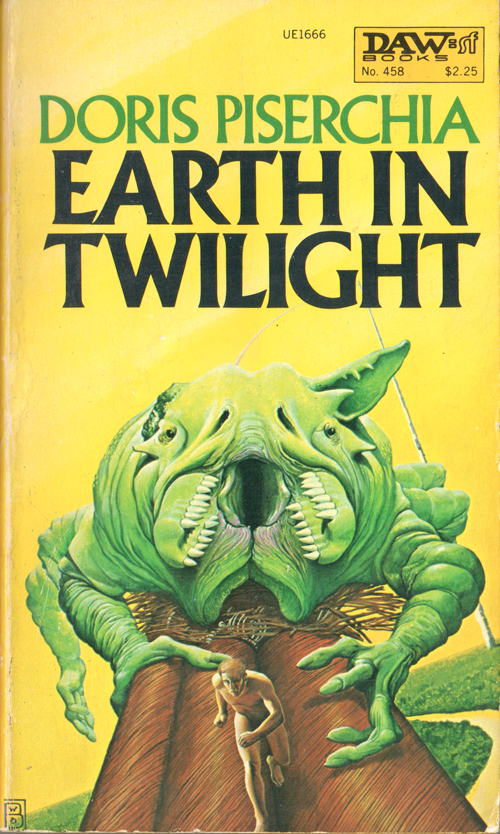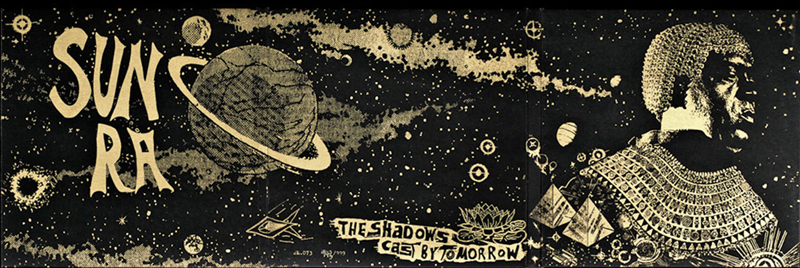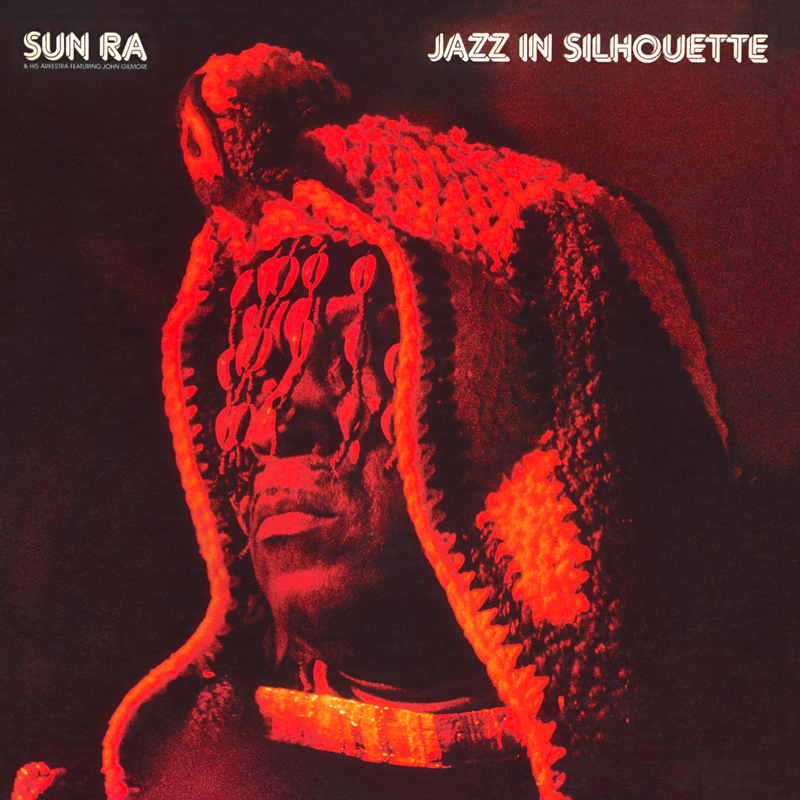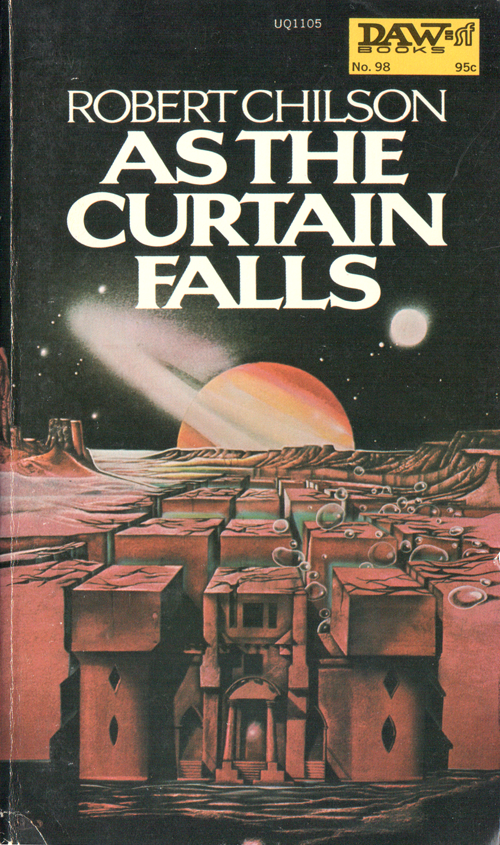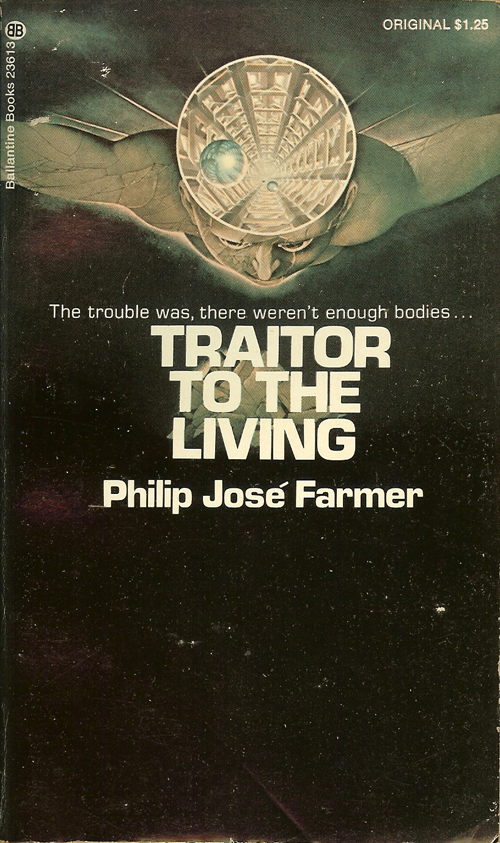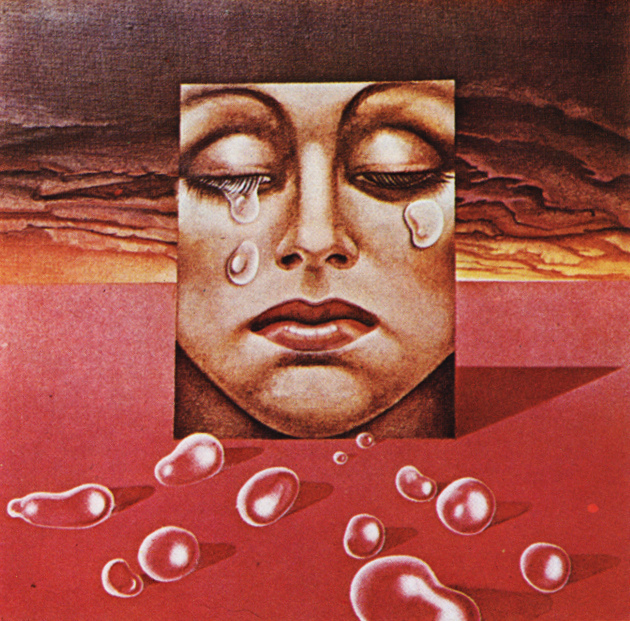I decided to continue my journey in the Dying Earth sub-genre by following up As the Curtain Falls by Robert Chilson with Earth in Twilight by Doris Piserchia. Compared to the other two Piserchia books I’ve read, Spaceling and Doomtime, Earth in Twilight is pretty straightforward.
The protagonist, Ferrer, travels from the planet Laredo to Earth. It’s far in the future. Earth has been overrun by an enormous jungle. The vast forest is punctured by tall space elevators that are connected by bridges and thick threads of spider web extruded by elephant-sized insects. All the human-built structures are in disrepair. I’ll let Piserchia’s own words from the first page describe her vision:
Earth looked like a big ball of yarn with a great many knitting needles sticking out of it. Loose yarn seemed to be strung from needle to needle, some of the strands so loose they nearly touched the land while others were so tight they were many thousands of miles up in the sky. Creatures great and greater made their nests on the bridges…
Everyone on Laredo thinks that humanity vacated the Earth and left it to nature centuries ago.
The setting is very similar to Hothouse by Brian Aldiss. Unfortunately I’ve only read the abridged version of that novel, published in the US as The Long Afternoon of Earth. The Earth has become tidally locked with the sun, only showing it one side which is covered in a giant banyan tree. I liked the abridged version but I want to read the full novel.
Earth in Twilight by Doris Piserchia, cover by Wayne Barlowe.
In Earth in Twilight, Ferrer’s mission is to prepare the way for spaceships from Laredo that will spray the Earth with a chemical called Deep Green that will defoliate it (an ironic name in reference to the defoliant chemical Agent Orange from the Vietnam war) and make it ready for humans to repopulate. But Ferrer discovers people, strange human-plant hybrids who disgust and then charm him.
Because this book was written by Piserchia, the prose is slightly stream of consciousness and there’s lots of weird monsters, inexplicable events, and mind mergers. I won’t spoil it but the first chapter has a great twist that sets the theme for the whole book. Piserchia explores what it means to be human while showing us another one of her weird, vital visions of the future.

